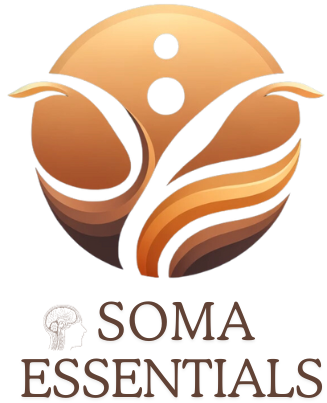Exploring the Mind-Body Connection: A Guide to Somatic Education
The mind and body are often seen as separate entities, but in reality, they are deeply connected. This connection is the basis of somatic education, a holistic approach to learning and improving movement sequences. By understanding and exploring the mind-body connection, we can tap into our full potential and enhance our physical and mental well-being. In this article, we will delve into the world of somatic education and its practices, specifically focusing on exploratory movement sequences. These sequences allow us to tune into our bodies, explore different movements, and develop a deeper understanding of ourselves. So, let’s dive in and discover the power of somatic education in enhancing our overall quality of life.
Welcome to the world of somatic education, where mind and body meet in a holistic approach to wellness. Somatic education is a practice that focuses on the connection between the mind and body, and how this connection can improve overall physical and emotional well-being. In this article, we will explore the concept of somatic movement and its role in enhancing your understanding of your body and promoting self-discovery.
Somatic education is based on the principle that the mind and body are interconnected and that by paying attention to the body, we can improve our mental and emotional states. Unlike traditional exercise, which often focuses solely on physical fitness, somatic education takes a more holistic approach, considering the mind, body, and emotions as a whole.
Somatic therapy is a form of therapy that uses somatic education techniques to help individuals release tension and trauma held in the body. It can be beneficial for those seeking to improve their mind-body connection as it allows them to become more aware of their body and how it responds to different stimuli. By using somatic therapy, individuals can gain a deeper understanding of their emotions and how they manifest in the body.
There are various somatic exercises that can help you release tension, improve posture, and cultivate a deeper understanding of your body. One example is somatic yoga, which combines traditional yoga poses with gentle movements that focus on releasing tension in the body. Another example is somatic dance, which involves moving the body in a free-form manner to release stress and promote self-expression.
Somatic healing is another aspect of somatic education that focuses on using movement and awareness to heal emotional wounds. By paying attention to sensations in the body and allowing them to guide us, we can tap into our inner wisdom and gain insight into our emotions. Through somatic healing, we can learn to let go of past traumas and patterns that no longer serve us, leading to personal growth and self-discovery.
If you are interested in incorporating somatic practices into your daily routine, there are a few tips to keep in mind. First, remember to approach these practices with curiosity and openness, allowing your body to guide you. Also, be patient with yourself and do not force any movements that feel uncomfortable or painful. Lastly, remember to always listen to your body and respect its limitations.
Somatic education offers a unique and holistic approach to wellness by focusing on the mind-body connection. By incorporating somatic practices into your daily routine, you can release tension, improve posture, and cultivate a deeper understanding of your body and emotions. As you continue on your somatic journey, remember to always listen to your body and allow it to guide you towards greater self-discovery and personal growth.
Somatic Healing for Self-Discovery
In today’s fast-paced world, it’s easy to get caught up in the chaos and lose touch with our inner selves. However, somatic education offers a way to reconnect with our bodies and tap into our inner wisdom. Through somatic movement, we can learn to listen to our bodies and understand the messages they are sending us. This self-discovery process can lead to healing on both physical and emotional levels.
By unlocking our inner wisdom, we can gain a deeper understanding of ourselves and the world around us. Somatic education practices can help us release tension, trauma, and negative patterns that may be stored in our bodies. As we become more attuned to our bodies, we can also improve our posture, balance, and coordination. This can lead to a more integrated and harmonious mind-body connection.
Through somatic healing, we can also develop a greater sense of self-awareness and self-acceptance. By acknowledging and accepting our physical sensations, emotions, and thoughts, we can learn to be more present and compassionate with ourselves. This can ultimately lead to a more fulfilling and authentic life.
So if you’re ready to embark on a journey of self-discovery and healing, somatic education is a powerful tool to have in your toolkit. Through somatic movement and practices, you can tap into your inner wisdom and unlock your full potential. Are you ready to explore the mind-body connection? Let’s dive in.
What is Somatic Education?
Welcome to the world of somatic education, where mind and body meet in a holistic approach to wellness. Somatic education practices aim to improve physical and emotional well-being by focusing on the mind-body connection. This type of education involves exploring and understanding the body through movement, awareness, and sensory experiences.
Somatic education is based on the concept that the body and mind are interconnected and constantly influencing each other. By developing a deeper understanding of our bodies and how they move, we can improve our overall well-being and live more consciously.
Through somatic education, individuals can learn to release tension and stress, improve posture and movement patterns, and enhance body awareness. This can lead to improved physical abilities, increased relaxation, and better emotional regulation.
Somatic Psychology
Somatic psychology is a branch of psychology that focuses on the integration of the mind and body in therapy. It recognizes the importance of bodily experiences in shaping our thoughts, emotions, and behaviors. Somatic psychologists use various techniques such as movement, touch, and breathwork to help individuals connect with their bodies and access their inner wisdom.
Enhancing Body Awareness
Somatic education is also an effective way to enhance body awareness. By learning how to pay attention to our bodily sensations, movements, and postures, we can develop a greater understanding of ourselves. This can lead to improved self-awareness, self-care, and a more holistic approach to wellness.
The Benefits of Somatic Therapy
Somatic therapy, also known as somatic education, is a holistic approach to healing that focuses on improving the mind-body connection. It is based on the belief that the mind and body are intrinsically connected, and by addressing both, we can achieve better overall health and well-being.
Through somatic therapy, individuals can learn to listen to their bodies and become more aware of their physical sensations, emotions, and thoughts. By doing so, they can identify and release physical tension, emotional trauma, and limiting beliefs that may be holding them back from living their best lives.
One of the key benefits of somatic therapy is its ability to improve the mind-body connection. This means that individuals can become more in tune with their bodies, which can lead to a better understanding of their emotions and thoughts. By developing a deeper awareness of their physical sensations, individuals can learn to recognize when they are feeling stressed, anxious, or overwhelmed, and take steps to address these feelings before they escalate.
Additionally, somatic therapy can help individuals improve their body awareness. This involves being able to tune into one’s body and understand its needs. By learning to listen to their bodies, individuals can make healthier choices in terms of nutrition, exercise, and self-care.
Moreover, somatic therapy can also help individuals manage chronic pain and physical limitations. By becoming more aware of their bodies and learning techniques to release tension and tightness, individuals can experience a reduction in pain and an increase in mobility.
In conclusion, somatic therapy offers numerous benefits for improving the mind-body connection. Through this holistic approach to wellness, individuals can learn to listen to their bodies, become more aware of their physical sensations and emotions, and address any underlying issues that may be hindering their overall well-being. If you are looking to enhance your mind-body connection and improve your overall health, somatic therapy may be the perfect solution for you.
Somatic Exercises for a Stronger Body
Are you tired of feeling stiff and achy? Do you want to improve your posture and move with more ease and grace? Look no further than somatic exercises. These gentle movements can release tension and help you achieve a stronger, more resilient body.
Somatic exercises focus on releasing chronic muscle tension and improving body awareness. By tuning into your body and its movements, you can learn to release tightness and move with greater efficiency. This not only improves physical performance but also has a positive impact on emotional well-being.
One of the key benefits of somatic exercises is improved posture. With the sedentary lifestyles many of us lead, it’s easy to develop poor posture habits that can lead to pain and discomfort. Somatic exercises help to retrain the body and bring it back into alignment, reducing strain on the muscles and joints.
To get started with somatic exercises, try these simple movements:
1. Cat-Cow Stretch
This classic yoga pose is a great way to release tension in the spine and improve flexibility. Begin on all fours with your hands under your shoulders and knees under your hips. As you inhale, arch your back, dropping your belly towards the floor and lifting your head and tailbone. As you exhale, round your spine, tucking your chin to your chest and pulling your belly button towards your spine.
2. Shoulder Rolls
Stand with your feet hip-width apart and arms relaxed at your sides. Roll your shoulders forward and up towards your ears, then back and down in a circular motion. Repeat 10 times, then reverse the direction.
3. Pelvic Tilts
Lie on your back with your knees bent and feet flat on the floor. Place your hands on your hips and tilt your pelvis forward, arching your lower back. Then tilt your pelvis backward, flattening your lower back against the floor. Repeat this movement, focusing on using your abdominal muscles to control the movement.
By incorporating these somatic exercises into your daily routine, you can release tension, improve posture, and strengthen your body from the inside out. Remember to listen to your body and move slowly and mindfully. With consistent practice, you’ll notice a significant improvement in how you feel and move.
In conclusion, somatic education is a powerful tool for improving your well-being on all levels. By incorporating somatic practices into your daily routine, you can enhance your mind-body connection, release tension, and gain a deeper understanding of yourself. Whether you are interested in somatic psychology or simply looking for ways to improve your physical and emotional health, somatic education has something to offer. Start exploring today and see the positive impact it can have on your life.

